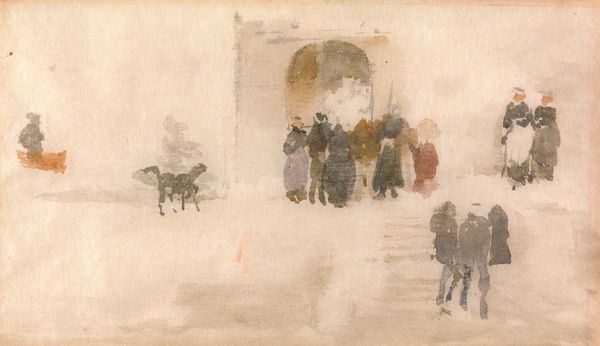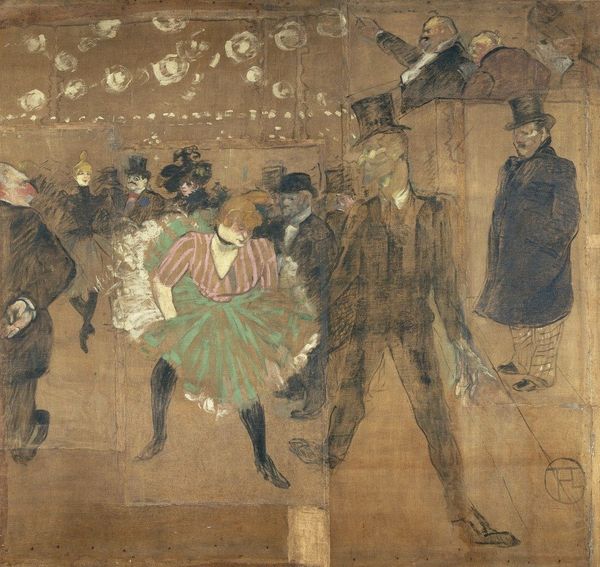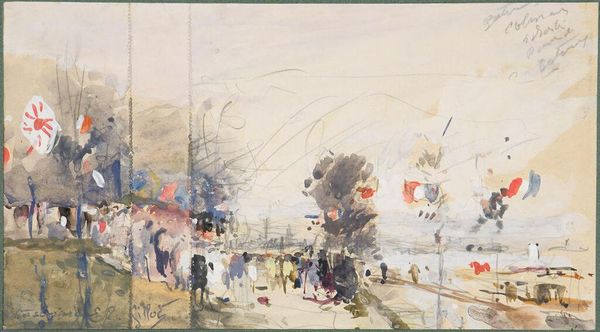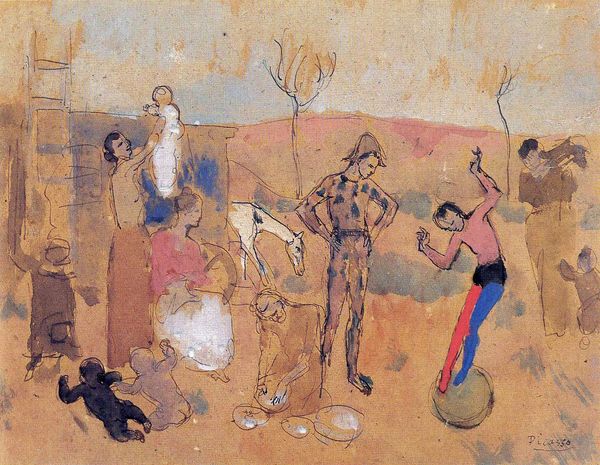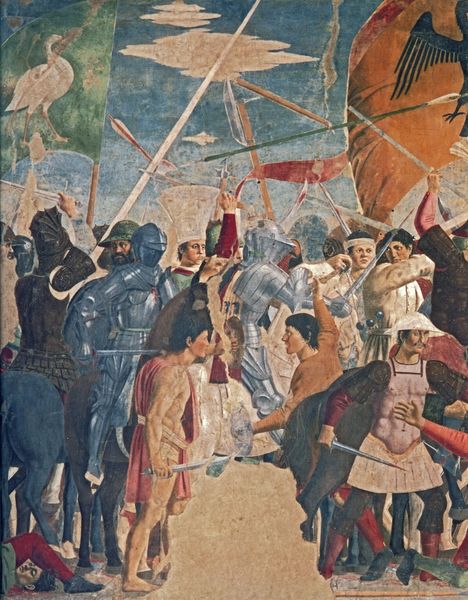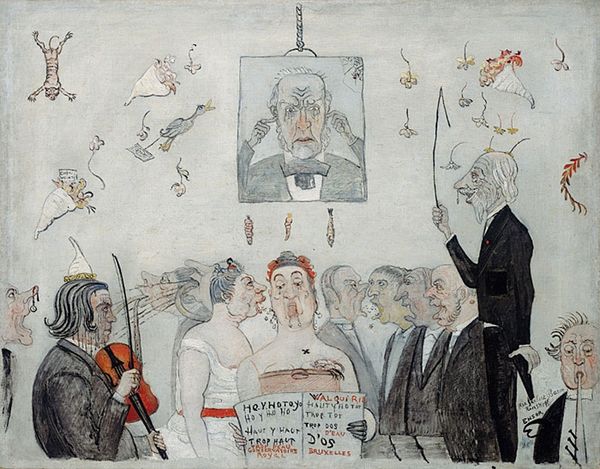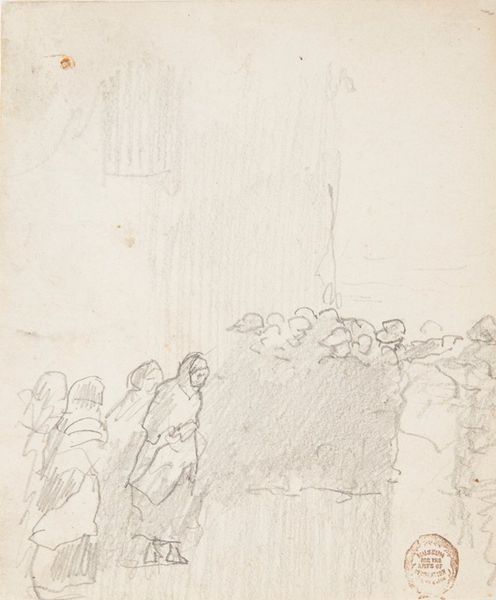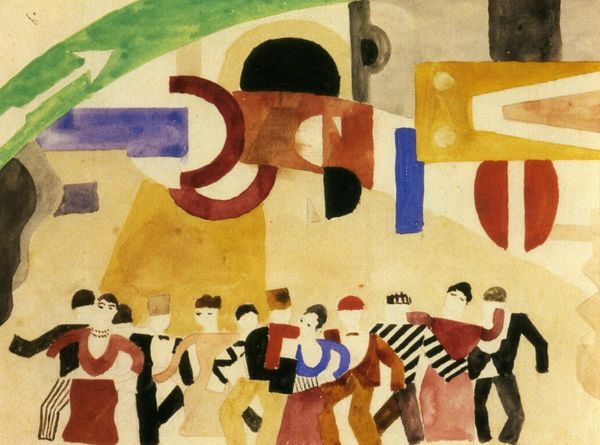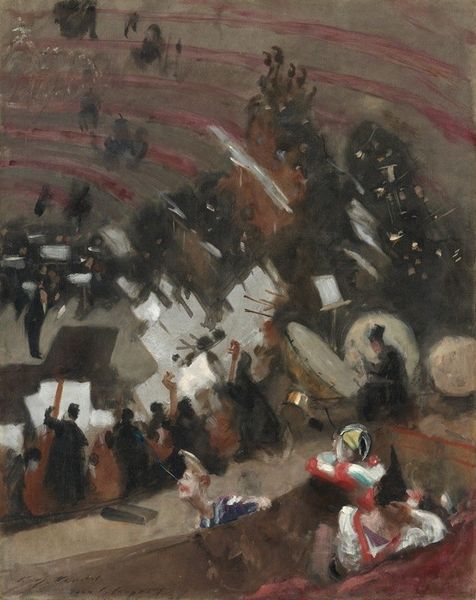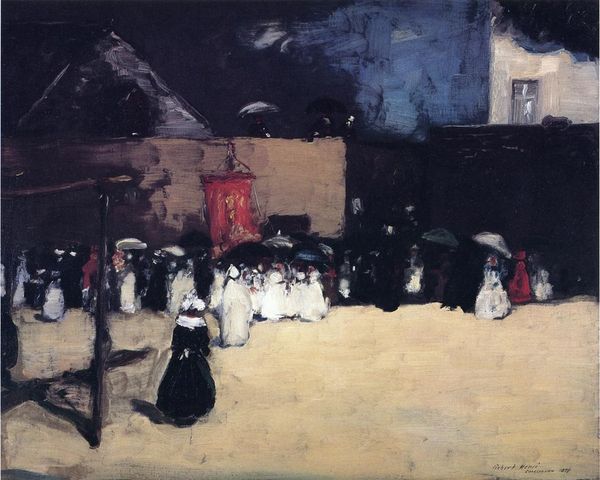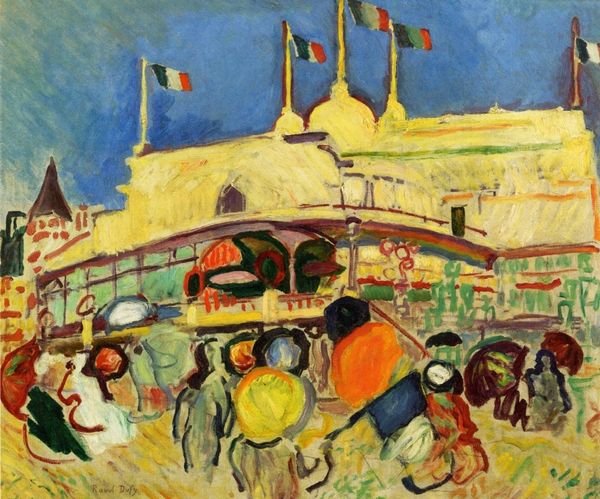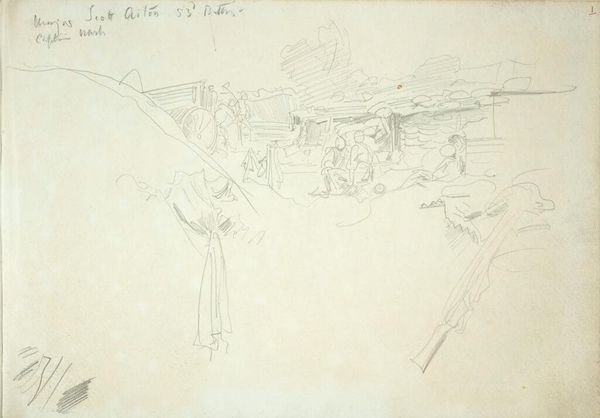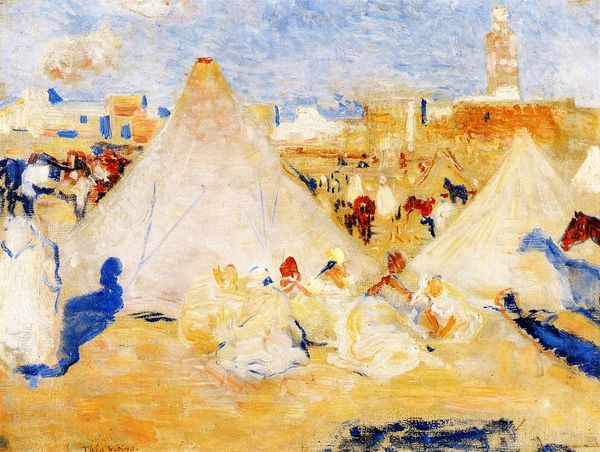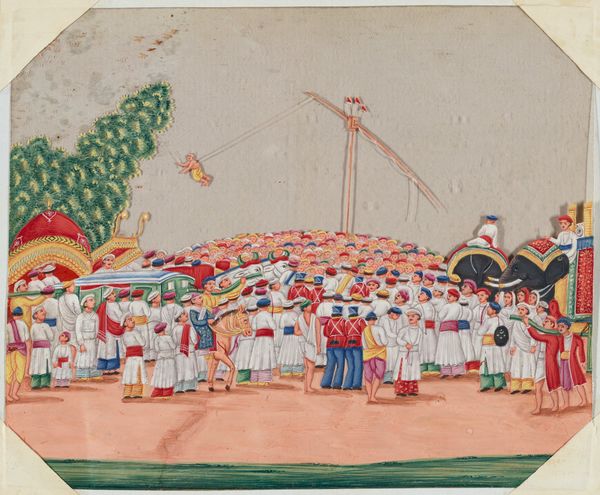
Dimensions: 35.88 x 52.71 cm
Copyright: Public domain
Editor: This is Maurice Prendergast’s "Venice (unfinished)" from 1899. It's a watercolor painting. I'm really drawn to its almost dreamlike quality, but I wonder how much the fact that it is unfinished impacts our interpretation? What stands out to you about it? Curator: It's fascinating to see how Prendergast manipulates the watercolor medium. Notice the bare paper, and how that contributes to the overall lightness. Consider the economics of art making; watercolor was more portable and less expensive than oils. This allowed artists greater freedom to sketch and capture fleeting impressions outdoors, informing the Impressionist style. Editor: That's interesting, I hadn’t thought about the practical side. Does that mean the choice of watercolor reflects a shift in how art was produced and consumed? Curator: Precisely! Watercolor allowed for a faster pace of production, making art more accessible to a broader audience. But what about the subject matter? Venice, a city with established artistic representations, became a commodity in itself, and artists like Prendergast found new ways to present the imagery. Editor: So the choice of Venice, combined with the speed and accessibility of watercolor, democratized both the production and consumption of art? Curator: It points us toward that line of thinking, certainly. Also, think about the materiality of the flags depicted. These would have been mass-produced objects signifying national identity, set against the unique architecture of Venice. Editor: That brings a completely different understanding of the painting. It's not just a pretty cityscape, but a commentary on industrialization and cultural commodification. Curator: Exactly! The ‘unfinished’ aspect might even underscore the relentless process of creating and consuming images of places and identities. Editor: That’s so insightful, I will definitely rethink what I see here. Curator: And I am now more convinced that considering these layers of art making, commodification, and reception gives us a richer, and more nuanced understanding of the artwork.
Comments
No comments
Be the first to comment and join the conversation on the ultimate creative platform.
